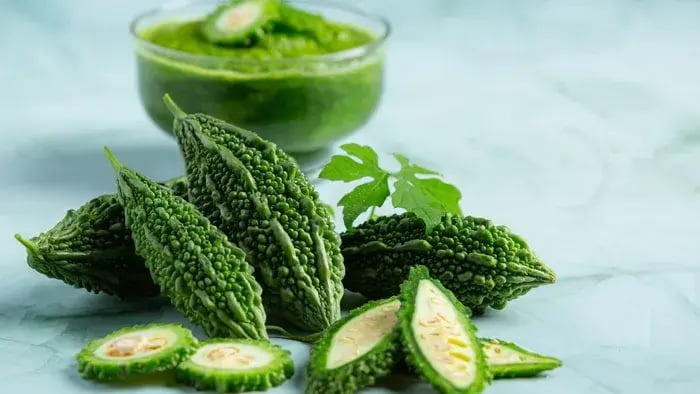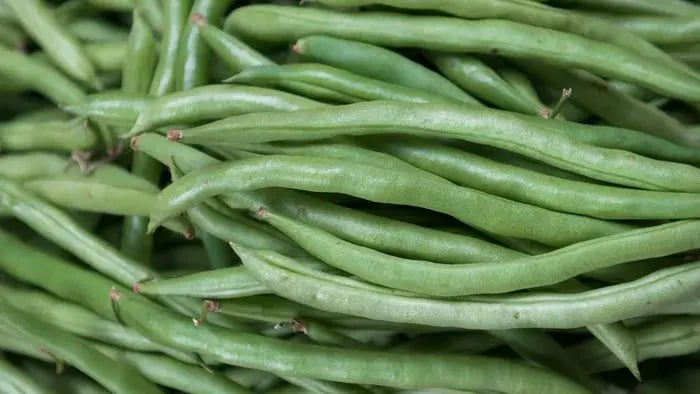- Bottle Gourd
- Okra
- Bitter Gourd
- Ridge Gourd
- Brinjal
- Ivy Gourd
- Green Beans
Introduction
The hot summer air and the increasing temperature can take a toll on your child's body. They might feel dehydrated, exhausted, and even suffer from sunstroke in the worst-case scenarios. To avoid all these problems, it's always suggested to take preventive measures such as modifying your child's diet per the seasonal requirements.
During this time, healthy vegetables that are naturally hydrating and filled with the goodness of multiple vitamins and minerals can positively impact your child's health. Such vegetables may naturally help regulate your child's body temperature and give them a sustained energy source. As per Springer published in 2017, eating green vegetables during summer may also infuse a lot of phytochemicals in a child's diet while strengthening their bones.
Best Summer Vegetables for Your Child
To further your child's understanding of nutrition, specifically vegetables, here are some of the top vegetables and their nutritional benefits that you can explain to your child.
-
Bottle Gourd
Multiple regional names, such as lauki and ghia in India, are known as Bottle Gourd. This vegetable is abundant during summer and has a long and slender shape. Because it is naturally hydrating, it is healthy for your child's body to maintain their energy levels. As per the Research Journal of Pharmacology and Pharmacodynamics, bottle gourd may also be extremely effective in maintaining blood pressure levels, specifically during summers, while also offering a boost of vitamin C and potassium. To teach your child about its nutritional value, parents may draw diagrams of the bottle gourd plant for better understanding.
-
Okra
Locally called Bhindi, okra is a famous vegetable available during the summer. It's prepared in various styles across the country in the form of main course dishes, pickles, and even used as a stuffing in parathas. As per molecules published in 2021, eating okra regularly may help in reducing oxidative stress and also promote cholesterol degradation in your child's body. Additionally, the presence of so many antioxidants may also protect your child's body by fighting against free radicals. Parents may organize a brief cooking activity and include their child in the process to make them understand how okra is healthy for them
-
Bitter Gourd

Bitter gourd, as the name suggests, has a slightly bitter flavor and is popularly cultivated in different parts of the country, such as Andhra Pradesh, Karnataka, and Maharashtra. What makes bitter gourd different from other vegetables is not just flavor, but also its fleshy texture. As per the Journal of Lipids published in 2015, bitter gourd is the perfect choice for parents looking to manage their child's weight and reduce fat content in their bodies. A PowerPoint presentation explaining the nutritional benefits of bitter gourd can stimulate better understanding among kids.
-
Ridge Gourd
Ridge gourd is another naturally hydrating vegetable that is often cultivated in hot and humid climates. One can find this vegetable being grown in states like West Bengal and Uttar Pradesh. It can be a great source of vitamins and minerals for your child and enhance their digestion and immunity. As per the Journal of Food Science and Technology published in 2016, ridge gourd is also a source of dietary fiber, other than vitamins A and C, and potassium and iron. Parents may take their kids to a nearby plant nursery to show them a ridge gourd plant and explain its nutritional benefits.
-
Brinjal

Brinjal is an extremely versatile vegetable that you can feed to your child in a lot of different ways. In India, it is commonly known by the name baingan and is majorly cultivated in Karnataka and Andhra Pradesh. The best aspect of this vegetable is that it has low fat content, yet is high in vitamins and minerals. As per Health Benefits and bioactive compounds of Brinjal published in 2018, brinjal contains vitamin C and K and offers magnesium and potassium to your child. You may explain the nutritional benefits of brinjal to your child by showing them a brinjal and educating them about each of its parts.
-
Ivy Gourd
Ivy Gourd is a cylindrical-shaped vegetable popular for its naturally high water content. The vegetable is generally grown in the states of Maharashtra and Kerala. As per Lipids in Health and Disease published in 2014, ivy gourd can be beneficial for your child’s health as it is a strong source of vitamins A and C, along with multiple minerals. Additionally, being a great source of dietary fiber, it is also useful for your child's digestive system and increases their immunity. One of the best ways to teach a child about ivy gourd is by making them write an essay about its nutritional benefits after collecting resources from the internet.
-
Green Beans
Green beans are crunchy, light, and a versatile add-on to several dishes. In India, green beans are abundantly available in the summer and spring. One of the best aspects of green beans is that they are a great choice for someone trying to lose weight, as they are low in fats and carbohydrates. As per plants public information in 2024, green beans are also a great source of calcium and vitamin C. This makes it an excellent vegetable for parents who want to strengthen their child's immunity and bones. An interesting activity of making green beans with play dough while educating kids about its nutritional value can be an engaging experience.
Conclusion

Eating green vegetables during summer is essential for your child's overall wellness and to stay energetic. As the temperature rises, educating your child about making informed dietary choices may help them become more nutritionally aware. Moreover, it may also enhance their knowledge about the type of vegetables available in a particular season and their nutritional benefits.
Pakhi writes with the belief that dessert isn’t just a dish—it’s a mood. Her work blends storytelling with tips, turning timeless treats and trendy bites into accessible moments of comfort, celebration, and creative expression.
The views expressed are that of the expert alone.
The information provided in this content is for informational purposes only and should not be considered a substitute for professional medical advice, diagnosis, or treatment. Always seek the advice of your physician or another qualified healthcare provider before making any significant changes to your diet, exercise, or medication routines.
















